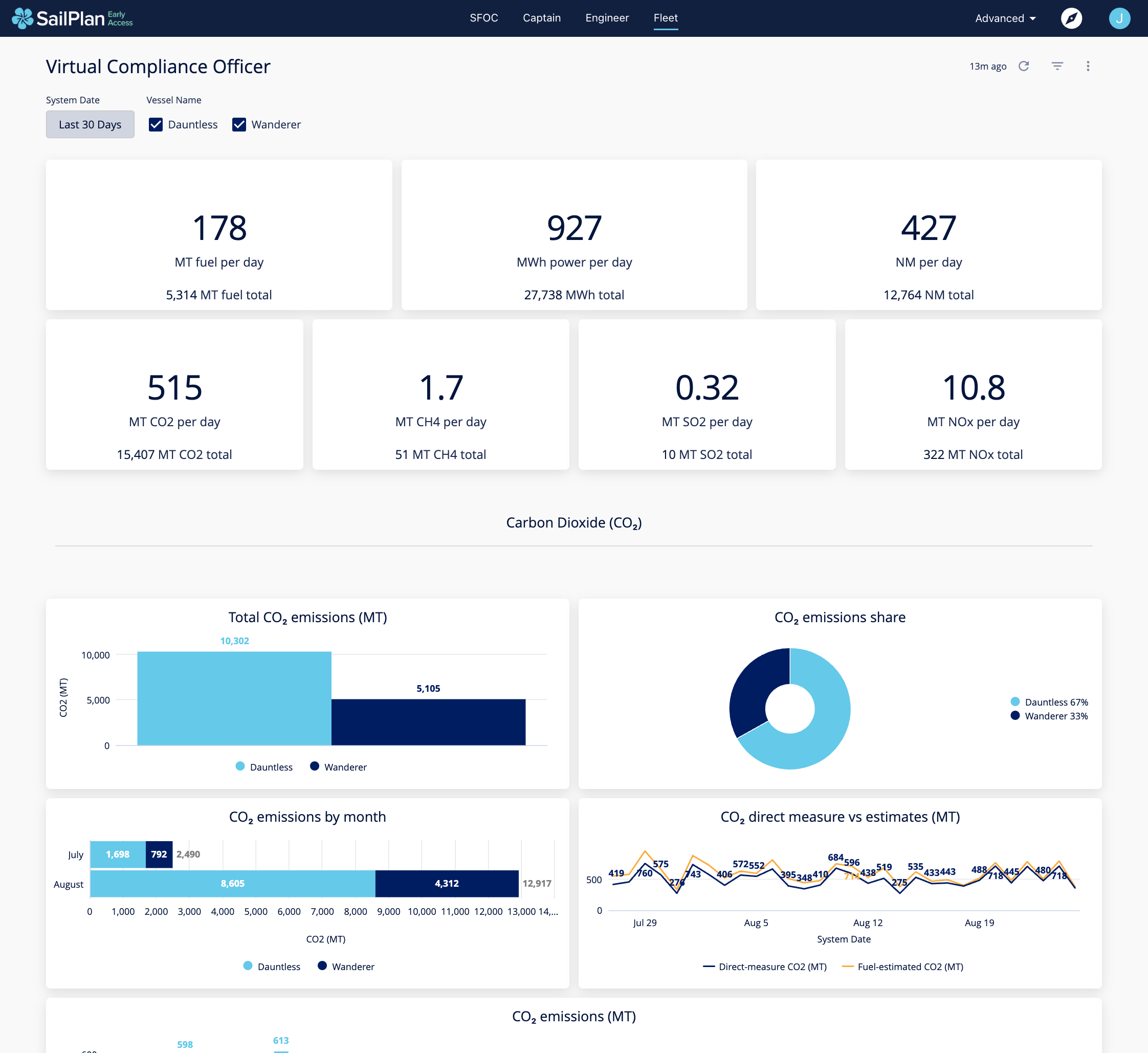The maritime industry is under growing pressure to enhance sustainability and reduce its environmental impact. Traditional methods of estimating emissions based on fuel consumption reports are often inaccurate, leading to discrepancies and compliance challenges. SailPlan offers a groundbreaking solution that eliminates the need for these estimations through precise, instantly verifiable direct emission measurements and reporting.
The Problem with Estimations
Estimating emissions through fuel consumption reports has long been the industry standard. However, this approach is fraught with inaccuracies due to inconsistent data collection methods, human error, and assumptions that do not account for real-time operational variations. These inaccuracies can significantly undermine efforts to reduce emissions and improve vessel efficiency.


Direct Emission Measurements: A Game Changer
SailPlan’s direct emission measurement technology revolutionizes how maritime emissions are monitored and reported. By using continuous emissions monitoring systems (CEMS), SailPlan provides real-time data on greenhouse gas emissions, including CO2, NOx, CH4 and SOx. This technology captures emissions data directly from the source, ensuring that the information is accurate, reliable, and immediately verifiable.

Benefits of Direct Measurement
- Accuracy and Reliability: Direct measurements provide precise data on actual emissions, eliminating the guesswork and errors associated with traditional methods. This leads to more accurate reporting and better compliance with international regulations.
- Real-Time Data: SailPlan’s technology offers real-time monitoring, allowing operators to track emissions as they occur. This immediate feedback enables quick adjustments to operational practices, helping to optimize fuel efficiency and reduce emissions on the fly.
- Regulatory Compliance: With increasing regulations from bodies like the IMO, EU, and the SEC, accurate emissions reporting is crucial. SailPlan’s direct measurement technology ensures compliance by providing data that meets the stringent requirements of these regulations, thereby avoiding potential fines and penalties.
- Operational Efficiency: Real-time emissions data can be integrated with other operational metrics to enhance overall vessel performance. By understanding the precise impact of various operational decisions on emissions, operators can implement more effective strategies for fuel consumption and maintenance, leading to cost savings and improved efficiency.
What You Need to Know About Compliance with FuelEU and the EU ETS
- Starting January 1, 2025: The FuelEU Maritime regulations will require vessels over 5,000 GT calling at EU ports to measure the carbon intensity of their annual fuel mix against a defined target. Similar to the EU ETS, the FuelEU scheme imposes financial penalties on carbon-intensive fuels, but with a focus on lifecycle emissions (well-to-wake) and providing financial incentives for compliance.
SailPlan is available today for deployment on your vessels in a matter of days, instantly providing you with data insights and cost savings strategies. With our new try-before-you-buy pilot program, you can see the benefits of the SailPlan monitoring and compliance suite without the need for entering a long-term contract before purchasing.
- Monitoring Compliance Balance: A vessel’s compliance balance under FuelEU will be closely monitored. Good data quality and systems are vital since the compliance balance can vary throughout the year based on the fuel used. Accurate and timely data sharing is essential to ensure compliance and manage the compliance balance effectively. SailPlan’s platform ensures high-quality data and seamless integration, enabling precise monitoring and management of your compliance balance throughout the year.
- Pooling and Trading Compliance Balances: FuelEU regulations allow for pooling compliance balances. Vessels with a compliance surplus can offset those with a deficit within a pool. However, the entire pool must result in a compliance surplus, or it will be rejected. Each ship can only be included in one pool per compliance period, adding complexity to managing multiple charters within a year. With SailPlan deployed on your fleet, users can easily determine which vessels have a surplus and which have a deficit, dramatically decreasing financial burdens imposed by these regulatory regimes.
- Settlement of Payments: For vessels generating compliance deficits, penalty payments are likely to be absorbed into freight costs or settled periodically by the charterer. Conversely, vessels with compliance surpluses can trade their excess balances, creating opportunities for financial optimization. SailPlan facilitates seamless tracking and trading of compliance balances, ensuring that your fleet remains compliant while optimizing financial outcomes.
Conclusion
As the maritime industry faces increasing pressure to improve sustainability and comply with rigorous emissions regulations, the need for accurate and reliable emissions data has never been greater. SailPlan’s direct emission measurement technology offers a robust solution that eliminates the need for estimations, providing precise and instantly verifiable data. By adopting SailPlan’s innovative technology, maritime operators can enhance compliance, improve operational efficiency, and contribute to global efforts to reduce greenhouse gas emissions.
For more information on how SailPlan can transform your emissions monitoring and reporting processes, reach out to our team today. Together, we can navigate towards a more sustainable and efficient future for the maritime industry.

